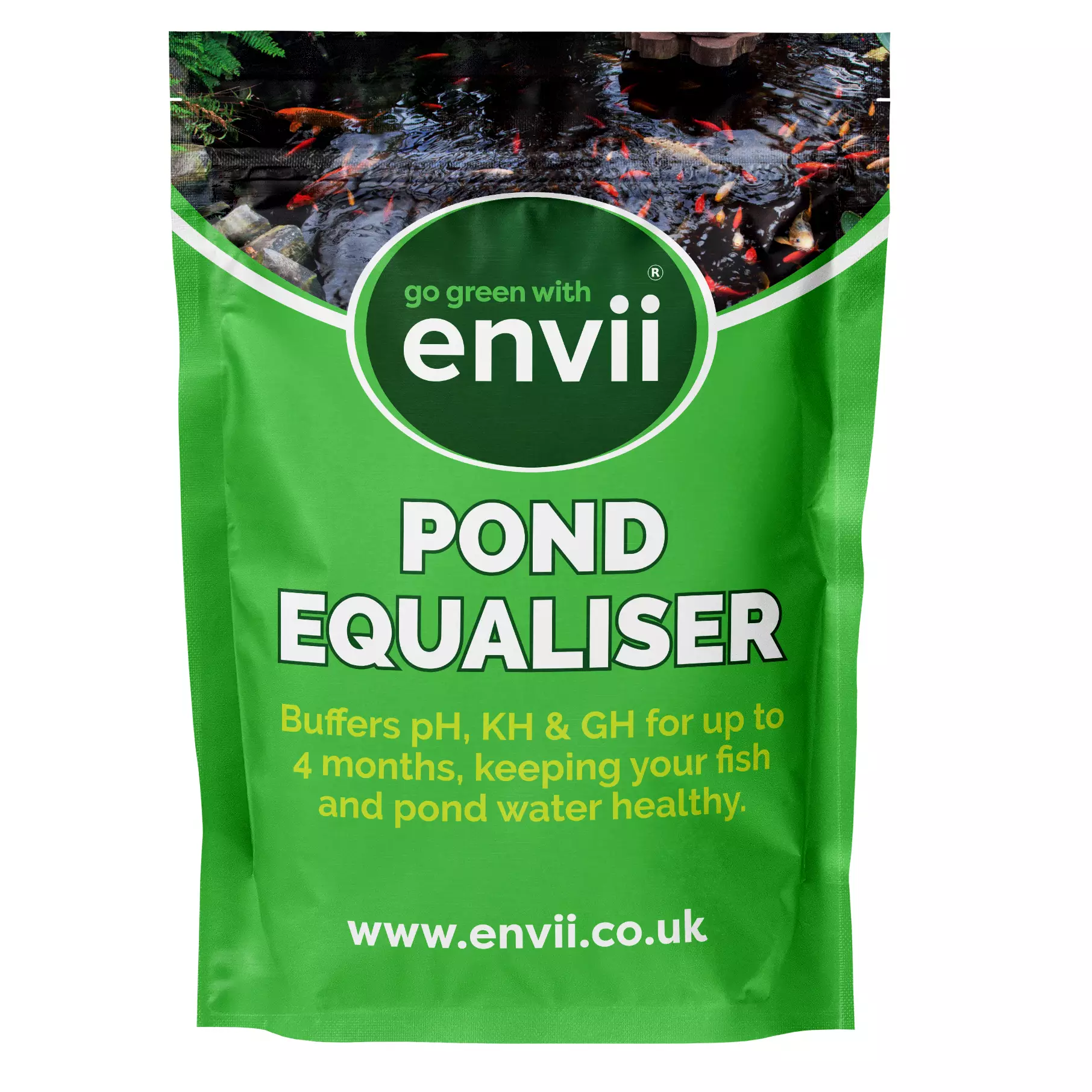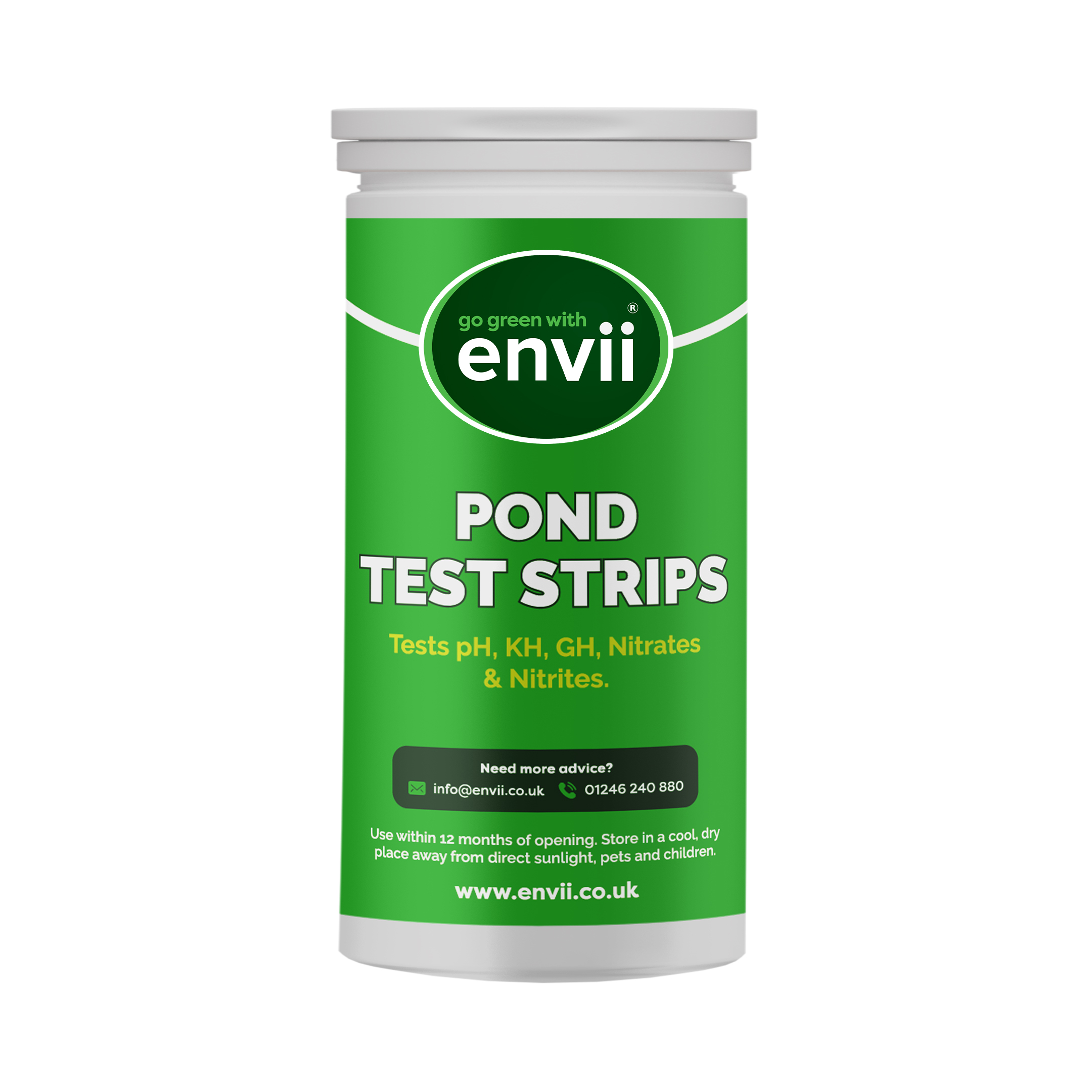It’s important to ensure that your pond’s pH level is between 7.5 pH and 8.5 pH. Sudden drastic changes, either increasing or decreasing the pH levels can have adverse effects on your pond, especially if you have fish. Sudden changes in pH can kill fish.
Learn more about a pond pH crash, what causes it, and how to prevent and mediate one for your own pond.
Jump to section:
What is a pond pH crash? • What causes a pond pH crash? • What can increase the risk of a pond pH crash? • 8 common signs of a pond pH crash • How to treat and prevent a pond pH crash
What is a pond pH crash?
A pond pH crash is when a pond experiences a sudden and dramatic change in pH levels. Typically, this is when a pond’s pH drops below 6.5 pH. A considerably acidic environment compared to the recommended neutral pond pH measure of 7.5 pH to 8.5 pH.
pH crashes are important to avoid because of the damage they cause to the natural biological balance of ponds, that work to sustain life. Fish, (aquatic) plants and wildlife suffer fatal consequences as a result of big drops in pH.
Acidic pond water also makes effectively maintaining clear and healthy pond water difficult. Such conditions would also kill off the beneficial bacteria that would otherwise remove the build-up of sludge, green water algae and improve the activity of biological filter systems.
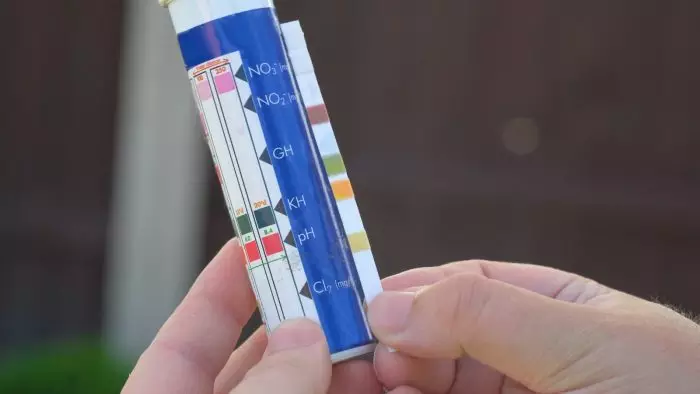
What causes a pond pH crash?
Various factors can cause a pond’s pH to crash. However, the underlying problem is unstable water. It’s quite normal for a pond’s pH to slightly fluctuate throughout the day. For example, if you tested your pond water in the morning, you will typically find your pond’s pH at its lowest.
The amount of fish you have, pond plants, rain, and the size of your pond can all affect your pH levels.
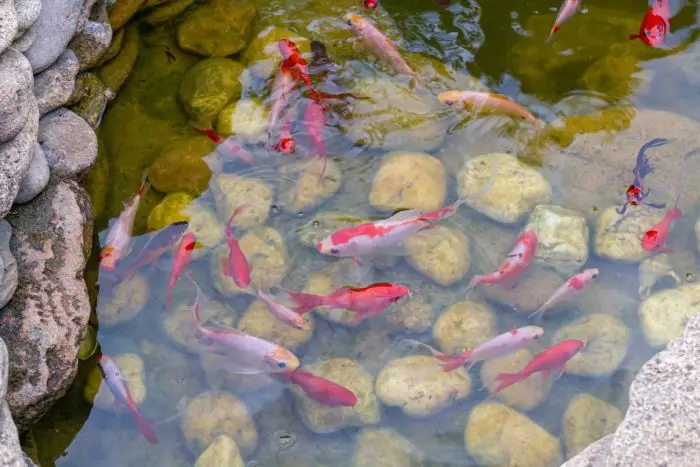
What can increase the risk of a pond pH crash?
The stability of your water against pH crashes is determined the measure of carbon hardness (KH) levels in the pond. Carbon hardness determines to what extent a pond’s pH will fluctuate. The lower the KH levels are in your pond, the higher the risk of a pH crash.
This is because the water is more susceptible to bigger drops/fluctuations in pH in short spaces of time. Hence why many pond owners experience what’s commonly known as an “overnight pH crash”.

Does the size of my pond affect anything?
Small ponds, particularly those containing less than 9,000 litres of water are more likely to have unstable water parameters and so are at much higher risk of the damaging effects of a pH crash.
That’s because sudden changes in a small pond will affect the whole body of water, while in a bigger pond, only a specific area is affected. If you’re not sure how much water your pond contains, find out now with our pond volume calculator.
Can heavy rain affect my pond’s pH levels?
Areas or periods of heavy rainfall or snow also cause pond pH crashes. Natural rainfall is slightly more acidic (with a pH averaging 5.6) than normal range of stream water. Which would have a neutral pH reading around 7.0. Thus, large amounts will alter a pond’s pH.
Due to the low level of carbonates present, areas of soft water are also at higher risk of pond pH crashes. It’s important to be aware of the type of water supplied to your areas. Especially when it comes to conducting pond water changes. Without enough carbonates, tap water is unstable. Making ponds sensitive to changes in pH.
8 common signs of a pond pH crash
Pond pH crashes are not visible to the naked eye. However, there are certain symptoms that act as warning signs in your pond:
1. The sudden death of fish or wildlife
2. Fish either resting at the bottom of the pond or gasping for air at the surface
3. Overgrowth of pond algae
4. Lethargic fish activity
5. Damaged aquatic plants
6. Fish with slimy skin
7. Changes in water clarity
8. Pond odour
While these are common signs of a pond pH crash. Without testing your pond water and knowing the ideal pond water parameters, you’re only playing a guessing game.
Use our pond test strips to test the pH levels in your pond.

How to treat and prevent a pond pH crash
The best way to treat and prevent a pond pH crash is to use pond pH buffer Pond Equaliser. A unique treatment that not only stabilises key water parameter (pH, KH and GH levels) for up to six months. Containing beneficial calcium, it also helps to remove toxic heavy metals and ammonia. Improving your pond’s overall water quality!
We recommend testing your pond’s pH levels before using any treatments, and it just so happens we have our own 5-in-1 pond test strips!
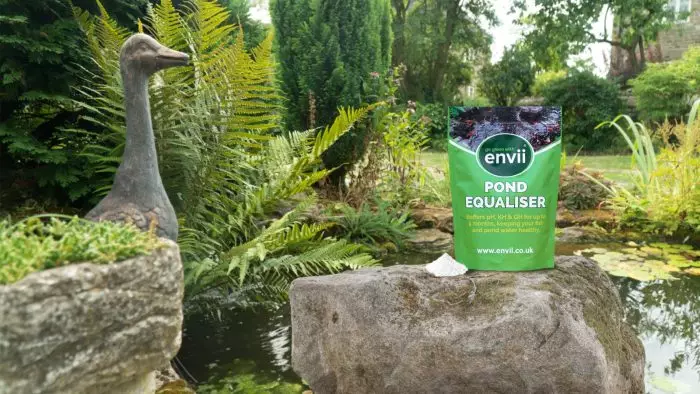
Related Products
-

Envii Pond Equaliser
£15.99Stabilises the pH & KH in ponds to keep water safe for fish.Add to Basket -

Envii Pond Test Strips
£11.99Easy to use Pond Test Strips measuring 5 key water parametersAdd to Basket

 Call us on 01246 240880
Call us on 01246 240880 Sign-up and receive 10% off
Sign-up and receive 10% off
